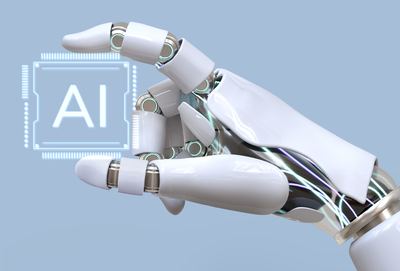New Engagement Models with Academia in India
3AI August 2, 2018

From AI, analytics perspective; research and innovation are the key differentiators. Let us dig deeper into the academia-industry engagements and dwell on building robust and synergistic engagement model and framework between academia-industry.
A combination of economic, business and technology factors have led to a steady rise in synergistic partnerships between industry and academia in India. Whilst a strong academia-industry partnership model has existed for several years in USA, UK, Canada, Singapore and few other countries. India Inc. is catching up quickly to the transformative benefits that academia-industry engagements can bring to both parties. Rather than co-opt existing technology, corporates are under increasing pressure to incubate and deliver bleeding edge technology solutions to ensure continued competitive advantage and they are turning to some of the brightest minds in universities today for ideas on how to do that.
While there may be several drivers for corporates inking strategic, operational partnership modes with an academic institution; I see three common themes: First, academic institutions are under increasing pressure to deliver bleeding edge research that has commercial viability and real-world applications. They simply cannot ignore events in the business spheres anymore. For this, they rely on enterprises to provide contextualized understanding within which they can frame their problem statements and hypotheses. Second, we are also witnessing a muted public-sector funding for research, combined with the proliferation of private universities. As a result, academics need the patronage of corporates to fund their long-term research endeavors and goals. Lastly, R&D departments at organizations need the bright minds from academia to deliver results in a shorter time-frame and lower cost. These three critical drivers are spurring a healthy interest in developing academia-industry engagements.
From AI, analytics perspective; research and innovation are the key differentiators. Let us dig deeper into the academia-industry engagements and dwell on building robust and synergistic engagement model and framework between academia-industry:
Collaboration for Data Sets
This engagement is primarily intended for gaining access to data for running analysis and hypothesis building. Usually, an organization may need access to multiple varieties of data sets that are available with universities, to refine and improve their statistical models. These engagements can be often seen between enterprises and university hospitals – a hot-bed of structured and unstructured patient data. Healthcare-focused technology companies typically need access to tons of data to build and improve their AI systems – to capture every possible variation of the data and ensure that their model accounts for the best results.
An example of such a collaboration can be seen between Google DeepMind and University College London (UCL) for the use of AI in radiotherapy. The key to this partnership is UCL’s hospital and the availability of researchers in a real-world medical environment.
Applied Research
The second area of collaboration is for industry and academia to create real-world applicability for research. Academics tend to be extremely visionary in their ability to add to a body of knowledge through thorough and intelligent research but may often lack visibility into challenges faced by businesses. By leveraging business context provided by corporates, they can add a flavor of high applicability to their research. Additionally, solving relevant, business-critical problems, researchers can also improve their visibility among their community, while potentially improving their H-Index scores through highly citable research.
An example of this collaboration is CA Technologies and IIIT Hyderabad engagement, they recently signed an agreement to set up a co-innovation lab. They intend to work together on topical problems in areas of Natural Language Processing, AI and Machine Learning, as per the company statement. For the researchers, this agreement would help improve their visibility through publications in scientific journals and CA Technologies can identify reference architectures and prototypes that will enable faster development timelines.
Co-Curriculum development and learning programs
This alliance between industry and academia is for cross-pollinating and co-creating AI, analytics academic curricula. Given the dynamic nature of business today, enterprises are collaborating with universities for providing continuous AI, analytics training to their employees across disciplines. This ensures that their employees have a contemporary understanding of the best practices in their field of work, while also promoting employee satisfaction. On the other hand, universities carry this understanding of the needs of the corporate sector and incorporate the same into their AI, analytics academic curriculum. For universities, this is a critical way in which they can create a comprehensive coursework that is exceeding relevant in the job market today.
Whilst, these are few prevalent areas of collaboration; other ones may look at mutually inking long-term strategic initiatives that involve academic institutions adding a cross-dimensional flavor to multiple analytics projects and requirements at organizations. The journey between academic – institutions collaboration has evolved and will witness several novel engagement models in the future. The continuous evolution of learning, unlearning and relearning phase will usher a new paradigm in academia-industry collaboration






